|
|
Advanced Physics Projects for School & Home |
|---|---|
| opensource, real science on a budget |
|
|
Advanced Physics Projects for School & Home |
|---|---|
| opensource, real science on a budget |
2025 ... 2024 ... 2023 ... 2022 ... 2021 ... 2020 ... 2019 .. 2018 .. 2017
Submitted a paper on the Aurora Monitor to the I.O.P. Physics Education Journal.
---------------------------ooo00O00ooo---------------------------
Application to display at the Makerfaire, Newcastle 2018 submitted. Final revisions to Aurora Monitor write-up before submission to IOP Physics Education journal.
---------------------------ooo00O00ooo---------------------------
Still mulling over an article on the Aurora Monitor I am writing -link. Aso applying to demonstrate the Aurora Monitor and Infrasound Monitor at the Maker Faire in Newcastle next year.
---------------------------ooo00O00ooo---------------------------
Website now html5 compliant.
---------------------------ooo00O00ooo---------------------------
I have not been idle. I have been writing up the Aurora Monitor hopefully for publication in Physics & geophysics Education Journals later this year. The code has been further refined and simplified and I have been testing stitching together the daily magnetometer plots for analysis of longer term trends using ObsPy. I have also set up a public GitHub account to distribute code and documentation.

---------------------------ooo00O00ooo---------------------------
The codebase for the Infrasound and Aurora monitors has been rewritten and simplified. Data is now stored in miniseed format permitting easy analysis using python/obspy. The aurora monitor in particular now uses significantly less system resources. The aurora monitor is glitching though this is likely to be a result of a faulty voltage regulator which will be replaced shortly. A new cheaper tunable backing volume for the infrasound monitor has been built using a sytinge and a hand-drawn glass capillary which will be trialled over the next few days. I will complete full write-ups of the construction method and release the code within the next couple of weeks.
---------------------------ooo00O00ooo---------------------------
I have extended the code to produce estimates of the time-averaged acoustic intensity averaged over a rolling window. The plot below shows the previous Sabic flare data in the 0.01-2Hz band, averaged over a 5s window, the vertical scale is Wm -2
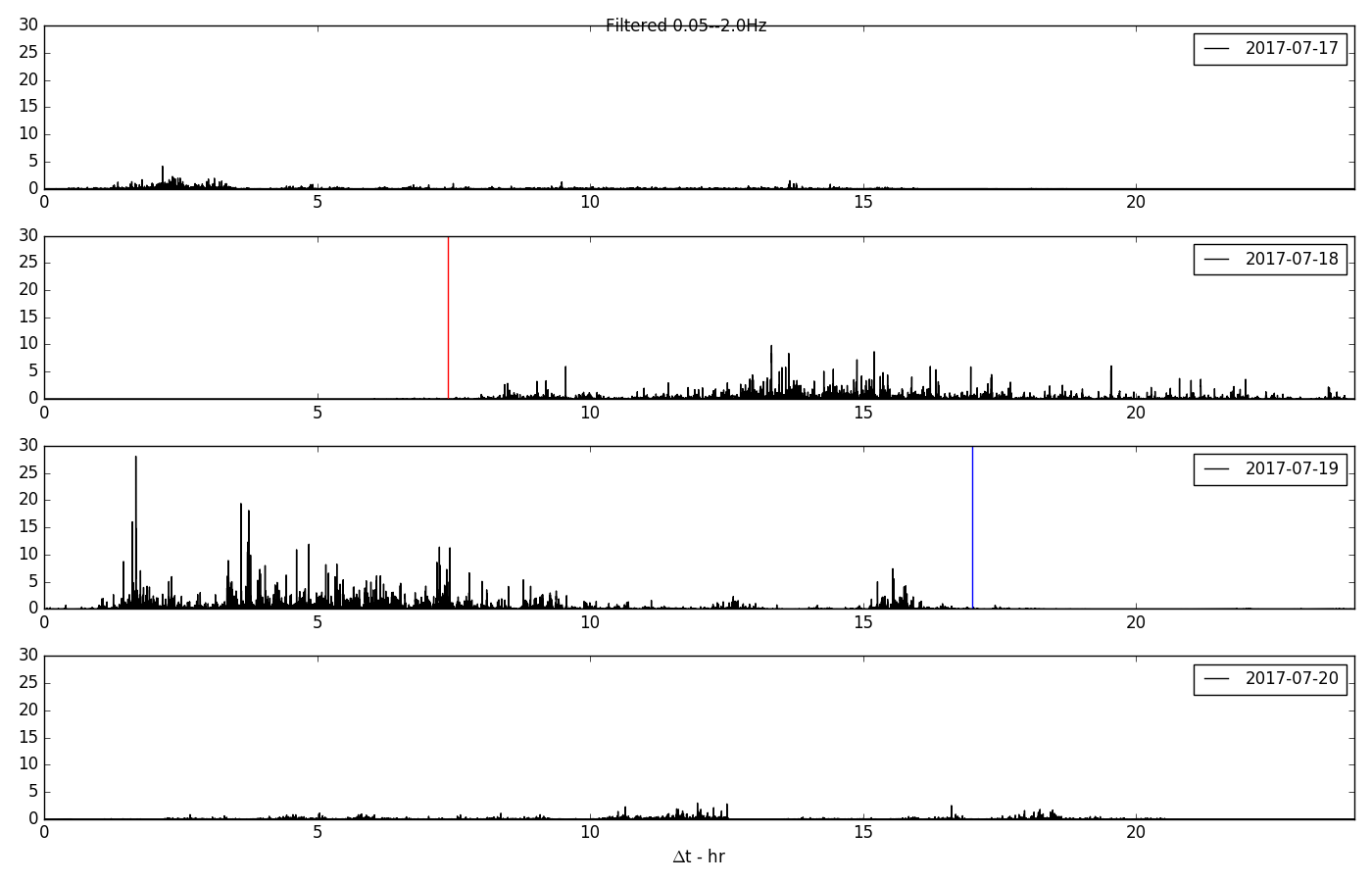
---------------------------ooo00O00ooo---------------------------
SABIC’s Olefins 6 plant at Wilton, Teesside is 5.5 km from the sensor and separated by low hills. The plant began 'flaring' at approx 07:25 (U.T.C.) on 18_7_2017 ( Video). The burn lasted until approx 17:00 the following day.
The sensor appears to have picked this up - illustrated below. The preceeding and following day are included for comparison. The two figures exhibit filtering of 0.01-15 Hz and 0.05-2 Hz, with the red and blue lines denoting approximate start and end of the flare. The vertical axis shows pressure variation in Pa.
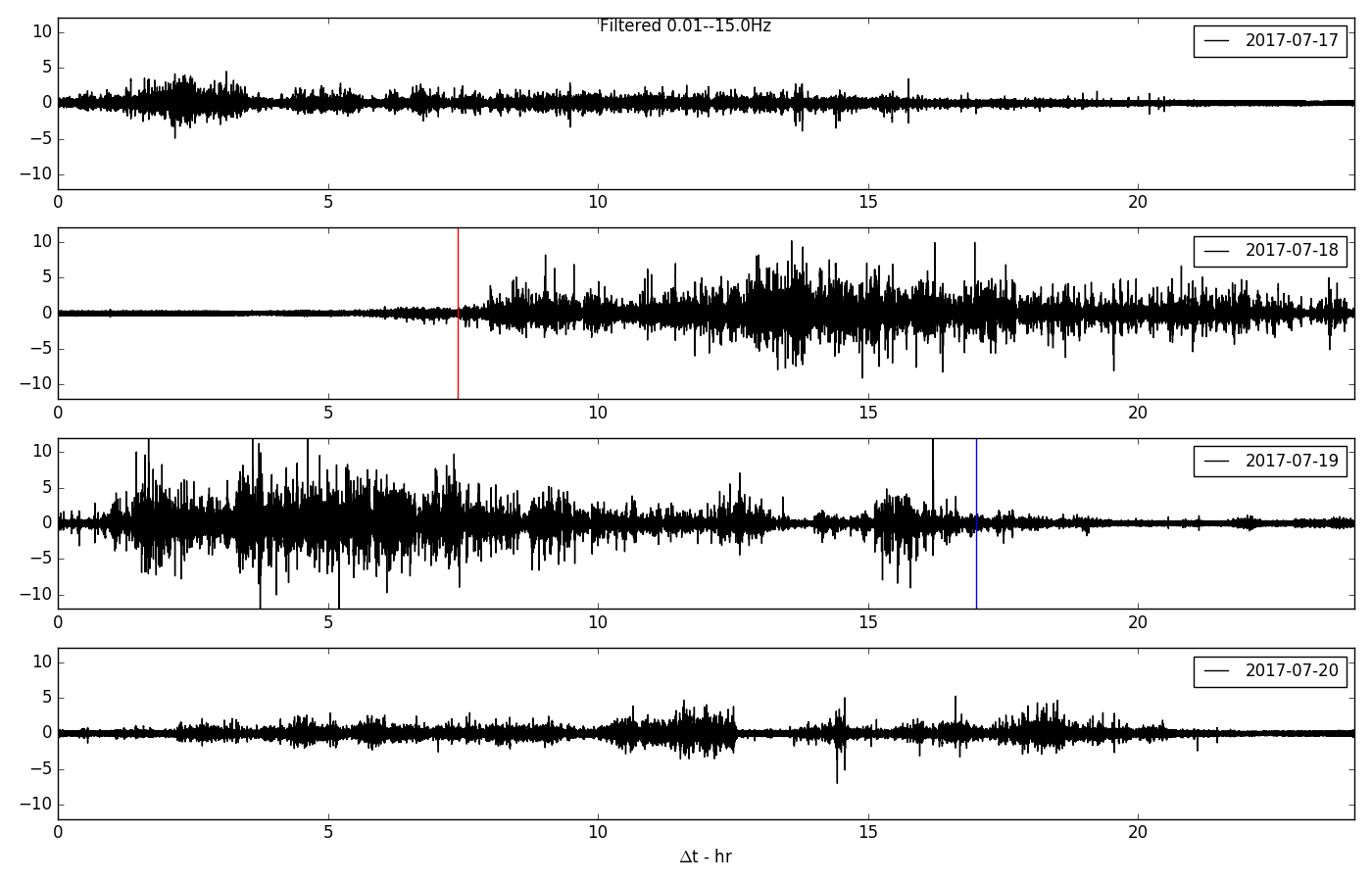
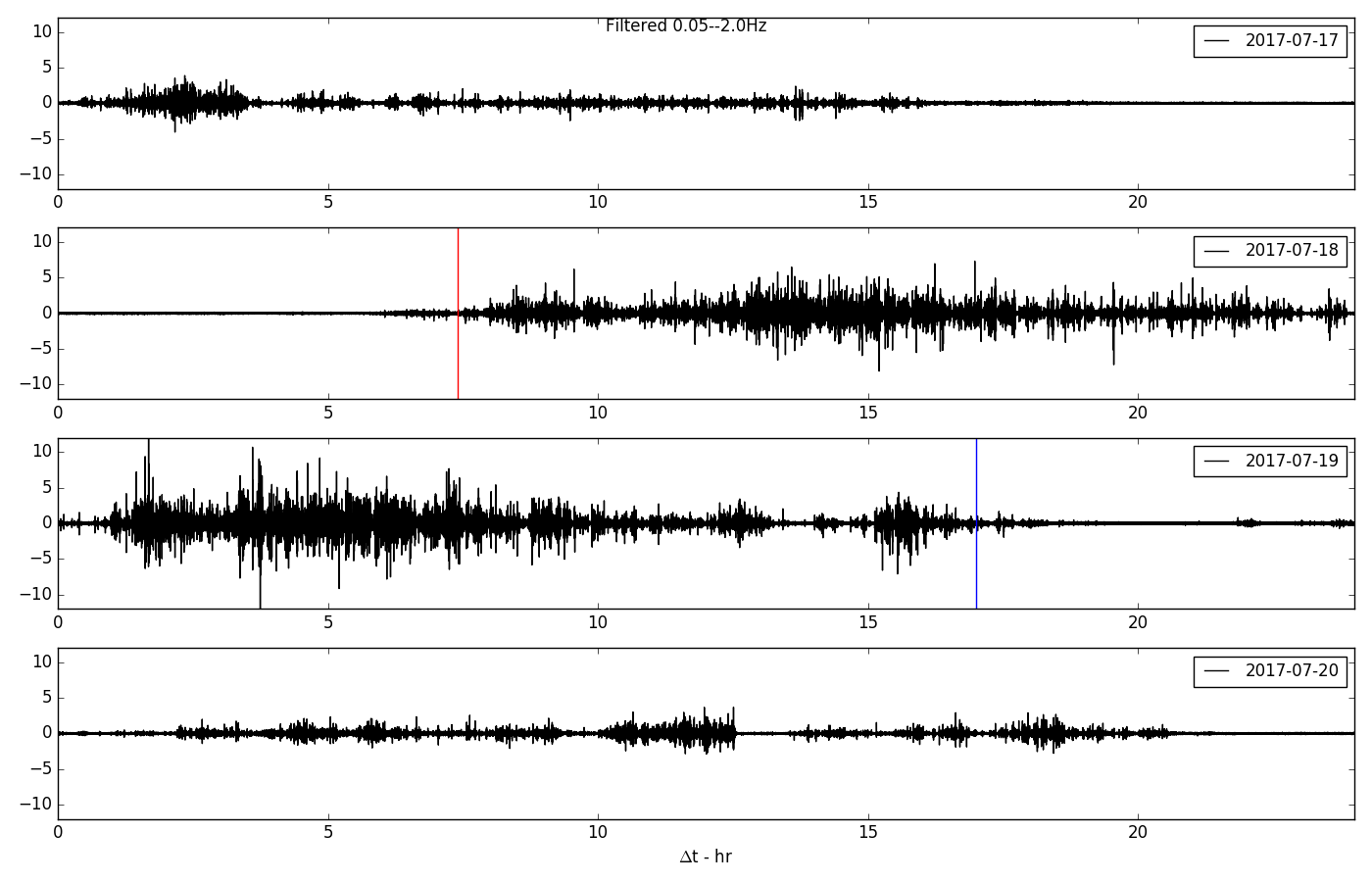
I am hoping to roll this out as a national project for schools & colleges if I can find partners who are interested in kids learning hands-on physics/signal processing/geophysics. I am presently looking overseas rather than the U.K. but would be happy to see these running on this side of the channel.
---------------------------ooo00O00ooo---------------------------
using the data from plots of 27th June - continuous wavelet transform



---------------------------ooo00O00ooo---------------------------
Using the Obspy Spectrogram routines, now able to easily zoom to section of a spectrogram. Axes labels need sorting, Plots show 8 hour period from midnight. Top plot = filtered in bands from a: unfiltered b:0.001 - 2Hz,c: 2 - 5 Hz, c: 5-10Hz, e: 10-18Hz. Middle plot = 8 hr spectrogram. Bottom plot = zoomed in on pulse at 2800 seconds.
Sensor located in a sheltered suburban garden, plots run from midnight to 8 am.



---------------------------ooo00O00ooo---------------------------
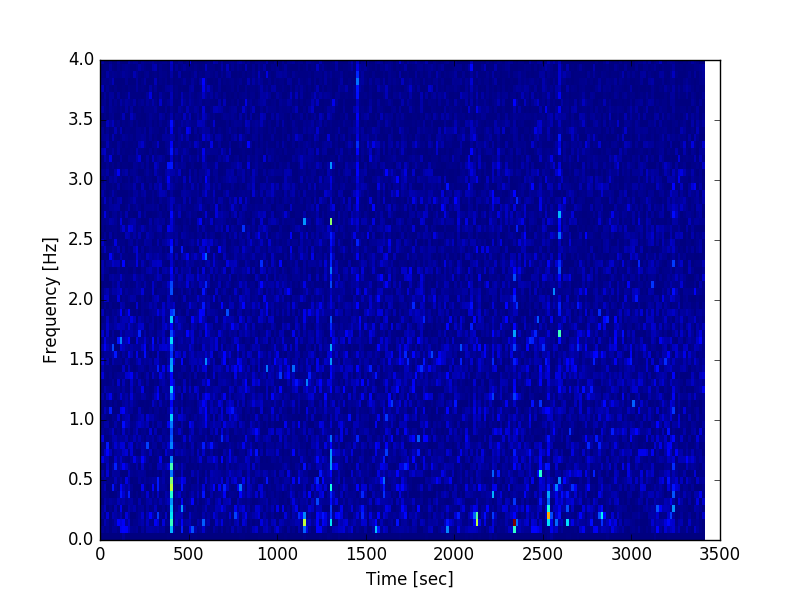
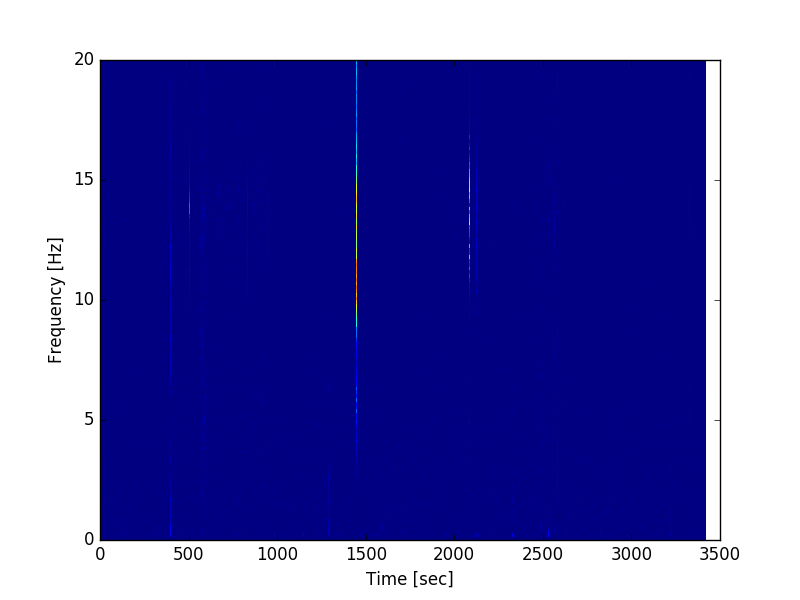
---------------------------ooo00O00ooo---------------------------
Working, now have a simple Python program to store binary data from the pressure sensor with a freeform text header. Reads fine. Now working a a separate plotting and analysis program. I hope to show this off at a physics teacher meeting in Durham at the end of the month. Presently investigating forming a network in schools / universities outside the U.K.
---------------------------ooo00O00ooo---------------------------
I have been busy for the last month with the day job and other things. However I have a couple of students who have make up an aurora monitor using a Speake F.G.M. They are about to emplace it and start running tests.
The Infrasound detector is still my primary interest. To that end I have been coding the data storage software. I looked at using one of the excellent open-source seismometry packages such as PySAC from Lawrence Livermoore. However I am coding from scratch - partly from personal preference and partly as this is to be a school & college project then I want the software to be as simple as possible so that students can adapt and improve.
Getting there though Python's handling of binary data (text files are too inefficient) is 'peculiar'. Mixing text and binary coded floating point values even more so.
---------------------------ooo00O00ooo---------------------------
Spent the day presenting my Aurora Monitor and prototype Infrasound monitor. Lots of interest, mostly from universities and overseas teachers - which was great though a little sad that the british system seems to set little regard by practical project work. I had many informative chats with people who have given me a host of ideas on how to improve it. I will be redesigning the code base and hardware for final release of v1.0 by the summer.
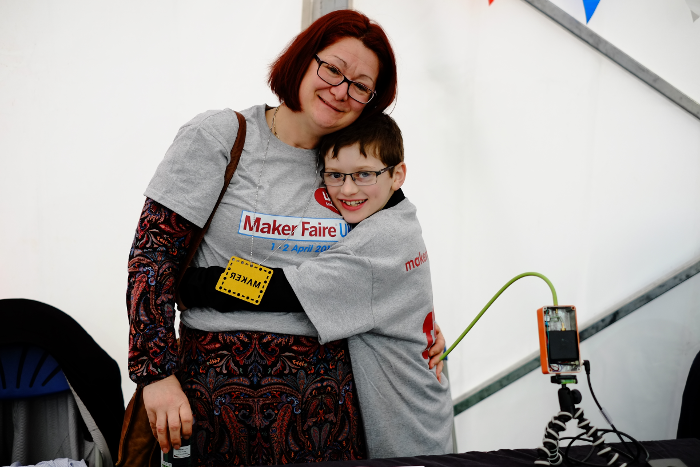
---------------------------ooo00O00ooo---------------------------
Success! I have moved from the SMI chip to the DVLR sensor. I am now reading both pressure differential and temperature directly with a Raspberry Pi rather than via an Arduino. The code is surprisingly simple - once you known how - getting to know how has taken quite a few hours. But am now reasonably proficient in i2c via the smbus interface in python. First time I have done bit masking using AND and OR in many years. Even BIG-ENDIAN and LITTLE-ENDIAN have been dredged from the murk of my memory.
---------------------------ooo00O00ooo---------------------------
A frustrating weekend spent attempting to interface to the SMI9543 differential pressure sensor. I must have spent ~20hrs between Fri and Sat night trying to talk to this chip. I thought the problem was its non-standard i2c interface so spent many hours trying with two different Arduinos and two Raspberry PIs before finally concluding that I had probably blown the chip whilst soldering it to a breakout board.
In retrospect an expensive surface mount device is probably a poor choice for a school project so have decided to try the All-Sensors DVLR. This apparently has better resolution and is available in through hole mounting. Casing and backing volume coming on and the processing software is being rewritten. Hoping to get it working and retested before the MakerFaire on 1st April.
---------------------------ooo00O00ooo---------------------------